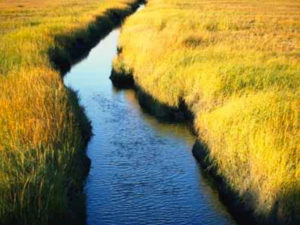
Conservation networks are important tools to help preserve biodiversity of freshwater ecosystems. We developed an approach to conservation planning that prioritized stream segments with high biological value within and complementary to currently protected lands. Using two conservation networks, we compared efficiencies of 1) conservation priorities assigned using our approach to priorities based solely on habitat integrity, and 2) constraining prioritization based on established conservation networks to results of a blank slate approach which did not account for existing networks. Our approach required 2.6 to 2.7 times fewer stream segments to represent all species, and contained 4 to 5 additional occurrences of least represented species on average and 67 to 76 additional occurrences for all species. Efficiencies for species representation were similar when incorporating existing conservation networks or taking a blank slate approach. Accounting for established networks required 1.7 to 2.1 times more segments to represent all species, and contained an average of 0.3 to 0.5 additional occurrences for the least well represented species and 11 to 21 less occurrences on average for all species. Our approach could be used to identify priority sites for stream species conservation within and complementary to established conservation networks.
